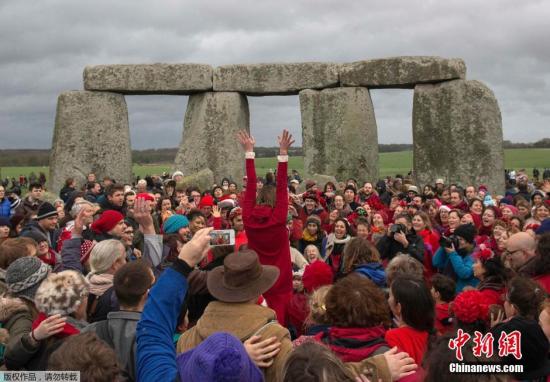China News Service, June 23, comprehensive report, on the 22nd local time, archaeologists said that near Stonehenge in the southwest of England, a large shaft circle remains with a history of at least 4,500 years was found. This may be the largest in the UK. One of the prehistoric structures.
Data Map: On December 22, 2015 local time, Salisbury, England, the people came to the ancient Stonehenge for an annual carnival to welcome the winter solstice.
According to reports, archaeologists have discovered at least 20 vertical shafts near the Durrington Walls, a prehistoric settlement about 3000 meters away from Stonehenge. They form a circle and each shaft has a diameter of at least 10 meters. Above, up to 5 meters deep. Research also shows that these shafts were excavated by people from the Neolithic age at least 4,500 years ago.
Some archaeologists believe that these shafts seem to be used as "the boundary of a sacred area associated with Stonehenge." The Durington Wall is at the center of the circle formed by these shafts.
Vince Gaffney, a professor at the University of Bradford who participated in the study, said that to determine the exact nature of these shafts, "appropriate excavation" is required, but the team believes that these shafts serve as boundaries. Through them, Durington Walls may be marked as special places, or they are used to highlight the difference between Durington and Stonehenge areas.
The Durington Wall was discovered in the 1960s and is the site of a large log circle located between Stonehenge and the River Avon. Some scholars once suggested that the Durington Wall is an ancient ceremonial building that was abandoned after Stonehenge was built.
At the end of January 2007, Pearson, a professor of archaeology at the University of Sheffield in the United Kingdom, announced that his research team had discovered a ruin of a Neolithic village by the Wall of Durington. They believe that the people who lived here were the builders of Stonehenge.

